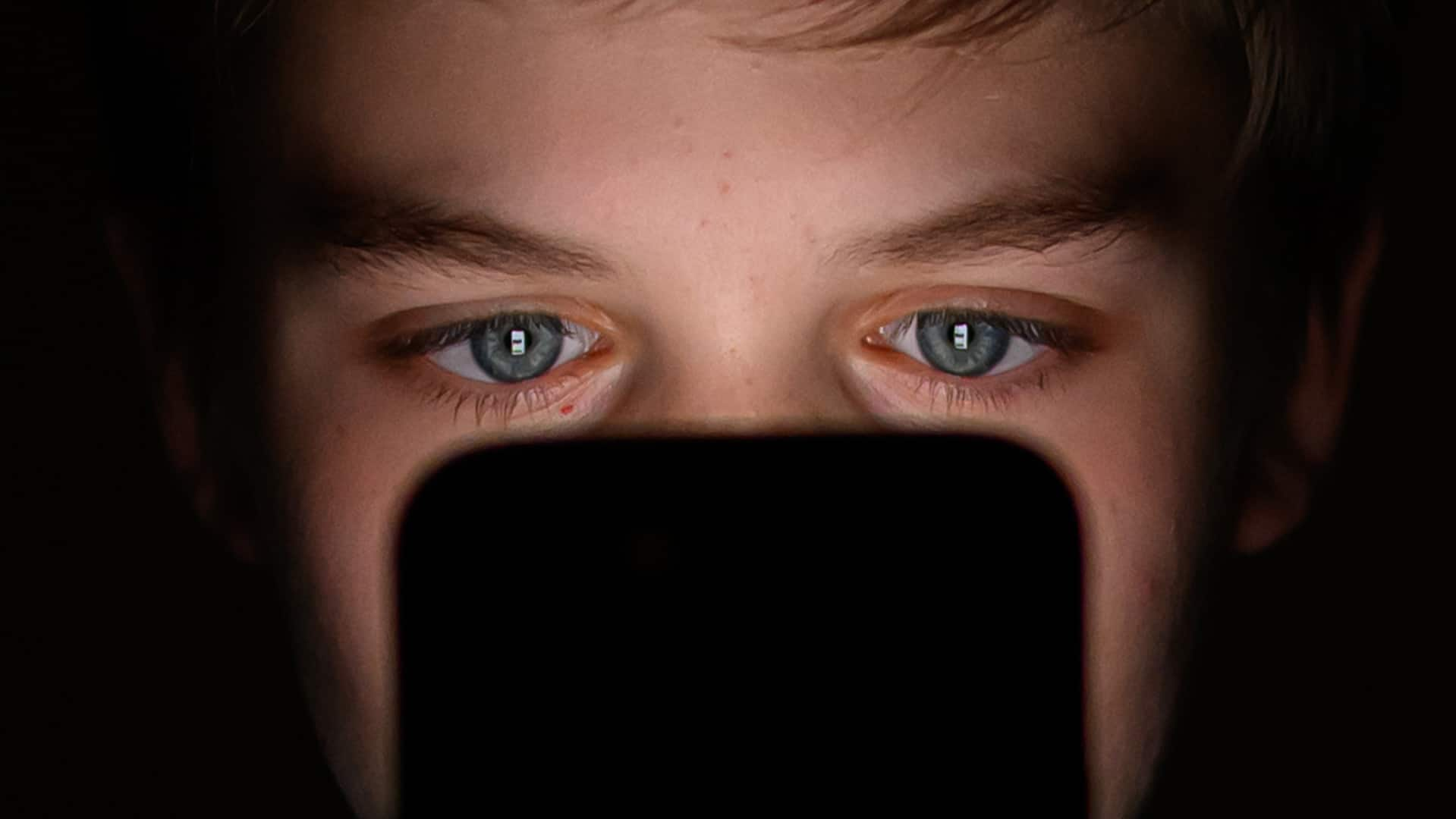Canadian scientists view changes in brain’s reward system as people watch clips.

Kids who spend hours on their phones scrolling through social media are showing more aggression, depression and anxiety, say Canadian researchers.
Emma Duerden holds the Canada Research Chair in neuroscience and learning disorders at Western University, where she uses brain imaging to study the impact of social media use on children’s brains.
She and others found that screen time has fallen just slightly from the record 13 hours a day some Canadian parents reported for six- to 12-year-olds in the early months of the COVID-19 pandemic.
“We’re seeing lots of these effects. Children are reporting high levels of depression and anxiety or aggression. It really is a thing.”
When parents said their children spend more time on screens and the grownups are stressed, then anxiety and depression scores in the kids also increase.
“Absolutely, I think this is a public health issue,” Duerden said when asked about her findings and those of others.
Just as serotonin dips when we’re hangry — hungry and angry at the same time — screen time can also strongly influence the brain’s reward system that is key to decision-making.
“It could be that there’s an actual depletion in serotonin,” Duerden explained. “There’s this imbalance and that’s how it could be mediating aggression in children.” Levels of other neurotransmitters like dopamine also matter.
Struggle to focus
But the average person doesn’t see social media, gaming or TV as a bad thing because the screens are everywhere, she said.
Duerden said when teens watch a short Disney Pixar film without dialogue, she sees core brain regions involved in social processing light up on functional near infrared spectroscopy — a type of non-invasive brain scan that shows changes in oxygenation levels or activation in different regions.

The prefrontal cortex becomes activated when watching a character in the film experience physical pain.
The same brain region also undergoes massive changes during adolescence, which is why her lab is interested in what happens with screen use. In children, the prefrontal cortex is important to master material in school.

What social media scrolling is doing to kids’ brains
With most children and teenagers spending hours a day on a smartphone, CBC’s Christine Birak breaks down what research shows about how using social media is changing kids’ behaviour, if it’s rewiring their brains and what can be done about it.
Michaela Kent, a PhD student in Duerden’s lab, said she’s shocked when speaking with concerned undergraduate students.
Constant stimulation
“They can’t focus during exams because they’re so used to scrolling on TikTok or looking through their phone,” Kent said. “They’re so used to having that constant stimulation that when it comes to focus, they really struggle.”
That’s why Kent said it’s important to better understand how people of all ages can better interact with their social media.
Olivia Miller, 22, of Baden, Ont., west of Waterloo, struggled with doom scrolling, depression and anxiety as a teen.
“Being on my phone for excessive amounts of time but not really absorbing anything was a very common thing for me,” Miller said.
Miller learned about how social media apps are designed to capture attention.
On a practical level, Miller removed Instagram from her phone’s homescreen. Miller said the extra time it takes to find the app offers time to reconsider.
Miller now gives leadership talks on mental health to students.
“Even if you’re putting a two-hour time limit on an app, the second that it’s over, you’re getting a flood of notifications and you’re back in,” Miller said.
Mood changes when watching
Dr. Rachel Mitchell, a child and youth psychiatrist at Sunnybrook Health Sciences Centre in Toronto, treats and studies how social media use affects mental health.
Mitchell said some children and adolescents will be more predisposed long-term to violent behaviour such as fighting, arguing and breaking rules on respecting the rights of others when using more social media over time than others.
The artificial intelligence algorithms in social media platforms are designed to attract and keep people on to expose them to more advertising.

“We need more regulation from the top down and we need more parental involvement in what kids are doing,” Mitchell said. “We need both.”
Psychiatry professor Patricia Conrod holds the Canada Research Chair in preventive mental health at Sainte-Justine Hospital in Montreal.
Conrod is concerned that the defaults on devices we use for social media tend to be set for adults. Yet they’re also an integral part of the lives of most young people. She says the features that keep young people scrolling through their feeds also make them lose some self-control and lose time.

“Just because something makes you feel good doesn’t mean it’s good for you,” Conrod said.
Conrod encourages children and teens to pay attention to how their mood changes when viewing content.
Conrod found social media use among 3,800 adolescents in Montreal followed each year from Grade 7 until Grade 11 was associated with lasting aggressivity in relationships over a year.
In contrast, watching television and playing video games were associated with being more hostile or aggressive in the short-term, like a single outburst.
Last month, Conrod published a study suggesting greater social media use was also tied to impulsivity in nearly 4,000 Canadian high school students.
“We have these two studies that were able to uniquely show that social media use affected behaviour over the long-term,” said Mitchell, who was not involved in the Montreal research.
Unregulated experiment launched
Last week, Jay Olson, a postdoctoral fellow in psychology at the University of Toronto Mississauga, published findings on smartphone addiction patterns among adults in Canada and 40 other countries.
On average, women scored higher than men on showing signs of addiction. The older someone is, the less likely they were to have problematic smartphone use.
For instance, in Canada among women aged 18 to 22, 56 per cent of them “would be considered clinically addicted to their phones.” That’s when use disrupts sleep, learning or relationships. The same was true for a third of men the same age.

“I think, in the future, we’ll see this time as the beginning of this unregulated experiment,” Olson said. “We know that smartphones reduce wellbeing. The big question is by how much, for what groups, and what can we do about it?”
Olson said in his research, the most effective strategies to reduce problematic use were simple:
- Reducing notifications to just essential ones, like phone calls or texts.
- Keeping the phone outside the bedroom.
- Disabling colour by turning on greyscale mode to deter use.
- Keeping the phone face down and out of arm’s reach.
Canada looks to legislation to protect kids
While those steps that individuals can take will help, doctors and scientists say they don’t go far enough to protect children and teens. U.S. Surgeon General Dr. Vivek Murthy called social media “an important driver” of the youth mental health crisis.
In the U.S., 33 states are suing Meta, Facebook and Instagram’s owner, claiming they made social media addictive to children.
Health Canada and Heritage Canada plan to bring in legislation following roundtables, where participants concluded children are the most vulnerable to online harm, such as a toll on mental health and the risk of sexual exploitation.
“The bill is expected to be tabled as soon as feasible in order to ensure that online services providers must be held accountable for the harmful content on their platforms online and promote a safer and more inclusive online environment,” Health Canada said in a statement to CBC News.
Instead of being overstimulated by social media, Miller now starts the day by playing piano. She also goes out in nature more often, listens to bird calls and sucks ice cubes or sour candy to stay mindful, adding that what works will vary from person to person.
“Be patient with yourself because it might be a process to … build new restraints with your usage.”
With files from CBC’s Christine Birak
*****
Credit belongs to : www.cbc.ca
 Atin Ito First Filipino Community Newspaper in Ontario
Atin Ito First Filipino Community Newspaper in Ontario






